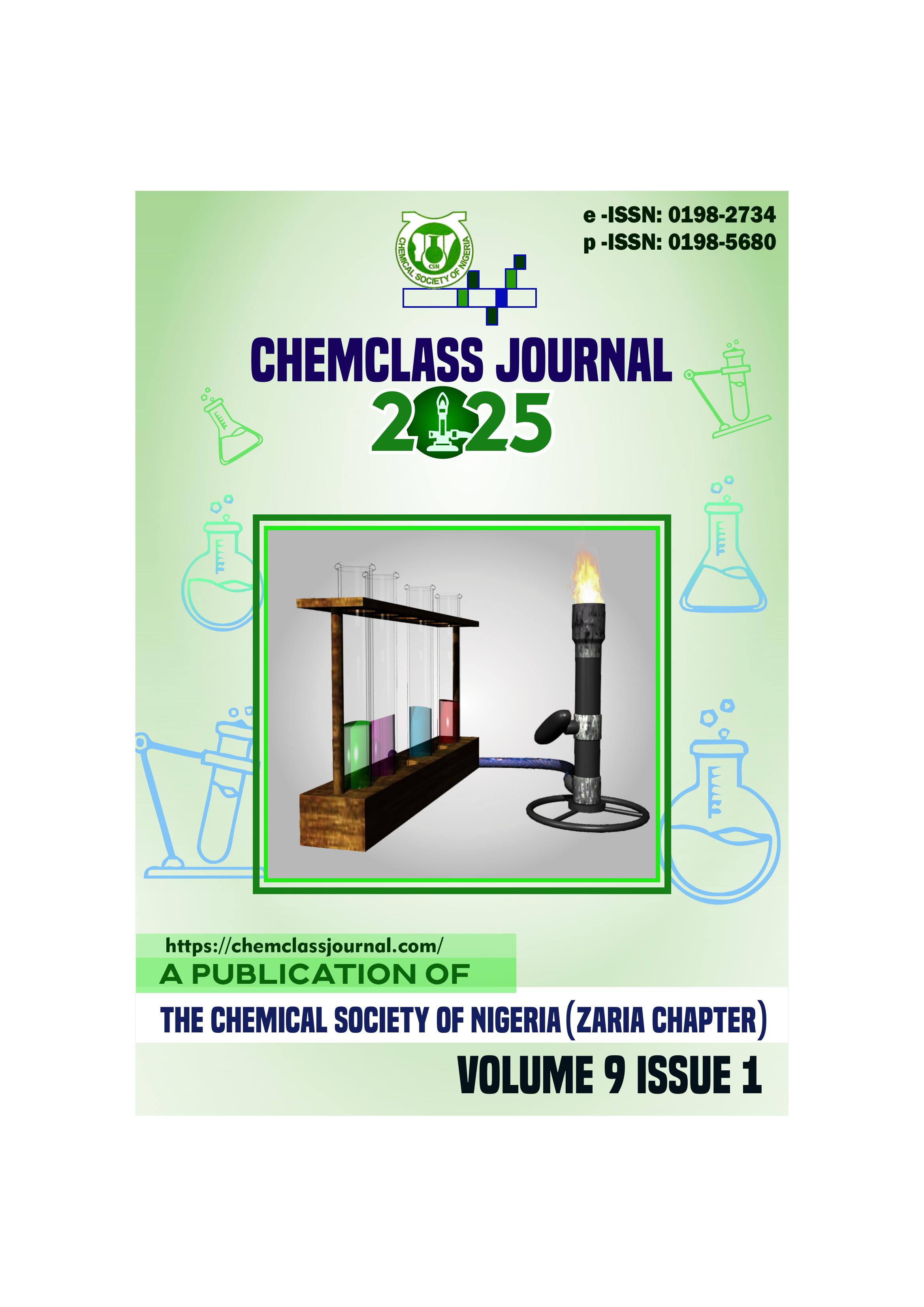Histopathological Analysis And Heavy Metal Concentration of Tilapia Fish (Orechromis mosambicus) Harvested From Rivers Used For Mining Activities
DOI:
https://doi.org/10.33003/chemclas_2025_0901/101Keywords:
Gills , heavy metals , skin, Liver, River waterAbstract
This research work was aimed at determining heavy metal concentrations and histopathological assessment
of selected parts of Tilapia fish (Orechromis mosambicus) as a biomarker for heavy metal pollution of the
rivers located in Anka and Maru LGAs of Zamfara state used for gold mining activities at two different
season. Twelve (12) pieces of average size tilapia fish, three from each river were harvested and sacrificed,
parts such as the gills, liver and skin (muscle) of the fish samples were processed and digested using
standard method for AAS heavy metal determination. Histopathological analysis was also conducted the
selected parts using gold standard method. The concentrations of all the heavy metals are generally higher
during the dry season than in the wet season. However, Zn and Cr concentrations in the fish were within
international safe limits of 5mg/l and 0.1 mg/l respectively, while the highest concentrations were recorded
in the dry season for Cd, Pb and Hg (0.963±0.001 – 0.275±0.002), (0.828±0.001 – 0.187±0.002) and
(1.349±0.003 – 0.219±0.002) respectively. These recorded values far exceed the WHO and USEPA limits
of 0.01mg/l, 0.01mg/l and 0.001mg/l for Cd, Pb and Hg levels respectively in water. Pollution load index
were greater than 1 indicating severe contamination. The histology assessment of tissues such as gills, liver
and skin (muscle) showed that most common gill abnormalities observed in the fish sample inhabited in all
the locations have desquamation of lamellar epithelium, hypertrophy of epithelial cells, lifting up of
lamellar epithelium, intraepithelial oedema, aneurysm, hyperplasia, and haemorrhage in the gill filament.
Histology of liver revealed the presence of heterogeneous parenchyma characterized by vacuolization, foci
of necrosis, hypertrophy of nuclei and degenerated hepatocytes. Histology changes of the skin (muscle)
were mostly at the level of the epidermis, without major changes in the dermis and hypodermis. The result
of the heavy metal concentration particularly those of Pb, Cd and Hg are exceptionally high and should
cause trepidation to regulatory authorities as continuous consumption of both water and fish from this river
will cause public health issues.





 ChemClass Journal
ChemClass Journal
